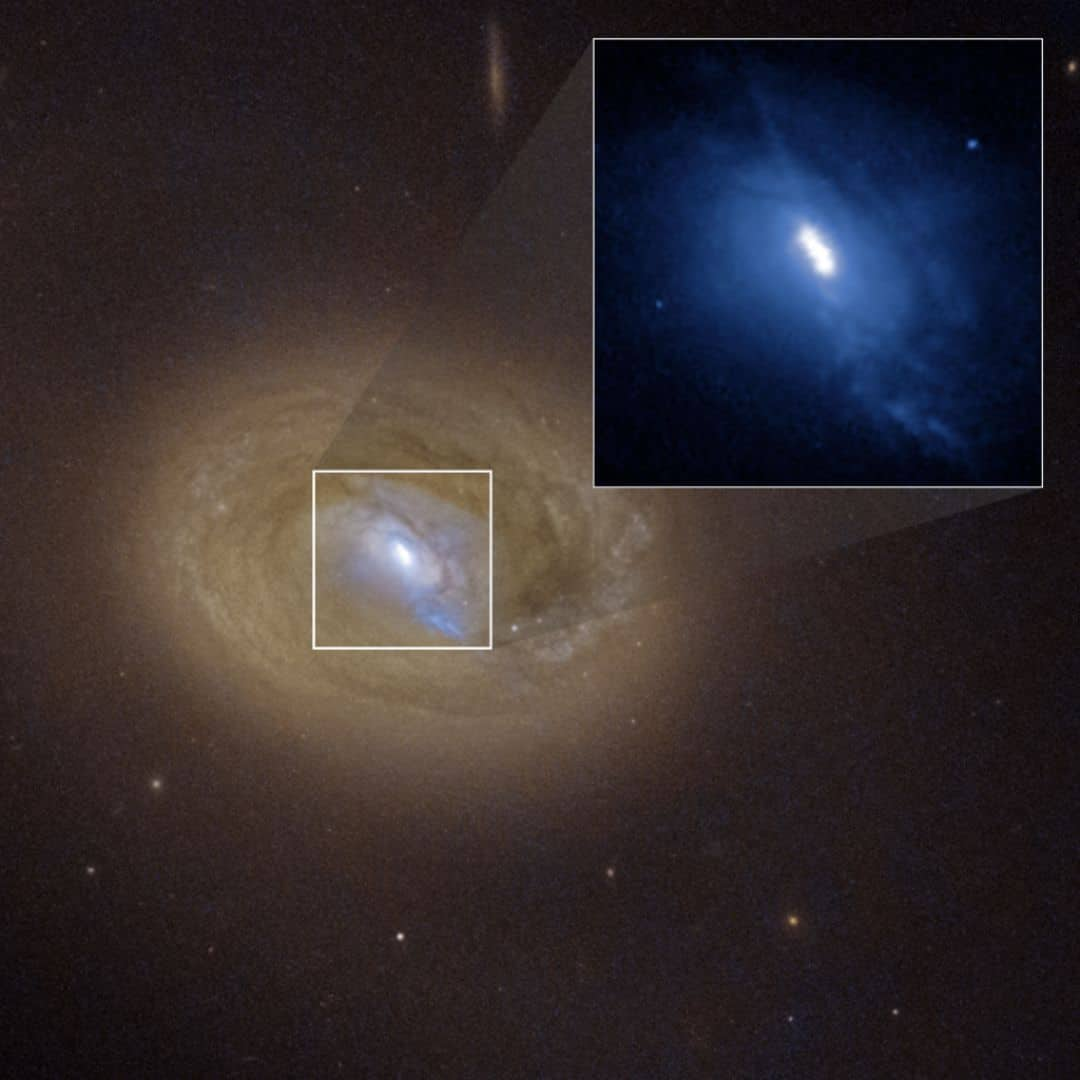



Two supermassive black holes have been discovered in close proximity, much like two sumo wrestlers preparing for a showdown. These black holes, located just 300 light-years apart, were observed using NASA’s Hubble Space Telescope and Chandra X-ray Observatory.
While astronomers have found several "dual" black holes before, most are separated by much greater distances. However, in the gas-rich galaxy MCG-03-34-64, this pair's proximity is exceptional. Although radio telescopes have detected closer pairs, they were not confirmed in other wavelengths.
AGN binaries like this were likely more common in the early universe. Back then, galaxy mergers were frequent, making this discovery a rare glimpse into our cosmic past. Located around 800 million light-years away, this pair provides valuable insights into black hole behaviour.
 A Hubble Space Telescope visible-light image of the galaxy MCG-03-34-064. Hubble's sharp view reveals three distinct bright spots embedded in a white ellipse at the galaxy's center (expanded in an inset image at upper right). (Image: NASA)
A Hubble Space Telescope visible-light image of the galaxy MCG-03-34-064. Hubble's sharp view reveals three distinct bright spots embedded in a white ellipse at the galaxy's center (expanded in an inset image at upper right). (Image: NASA)
Diffraction spikes are artefacts created when light bends around a telescope’s mirror. Falcão’s team then examined the galaxy using Chandra’s X-ray capabilities to probe further. "In the X-ray band, we saw two powerful sources of high-energy emission," Falcão explained. These sources matched the bright optical points seen with Hubble, leading the team to conclude that they were looking at two closely spaced supermassive black holes. Archival radio data from the Karl G. Jansky Very Large Array in New Mexico further supported their findings, showing that the black hole duo also emits strong radio waves. "When you see bright light in optical, X-rays, and radio wavelengths, it leaves little doubt. The pieces fit together, showing us the AGN duo," said Falcão.
The third bright source seen by Hubble remains a mystery. It might be gas shocked by energy from a jet of high-speed plasma from one of the black holes. More data will be needed to understand its origin.
Hubble's incredible resolution was crucial in observing these details. These black holes were once at the centre of their respective galaxies. As the galaxies merged, the black holes were brought closer together. Over the next 100 million years, they will spiral even closer until they merge, sending out gravitational waves that will ripple through space-time.
The Chandra program is managed by NASA’s Marshall Space Flight Center, with the Smithsonian Astrophysical Observatory overseeing science and flight operations. Hubble, a joint project between NASA and ESA, has been operational for over 30 years. Its ongoing discoveries continue to reshape our understanding of the universe. The Hubble mission is managed by NASA's Goddard Space Flight Center, with Lockheed Martin Space and the Space Telescope Science Institute supporting operations.
Read Also: Moon’s volcanoes erupted during dinosaur era; new study reveals
Discover the latest Business News, Sensex, and Nifty updates. Obtain Personal Finance insights, tax queries, and expert opinions on Moneycontrol or download the Moneycontrol App to stay updated!
Find the best of Al News in one place, specially curated for you every weekend.
Stay on top of the latest tech trends and biggest startup news.